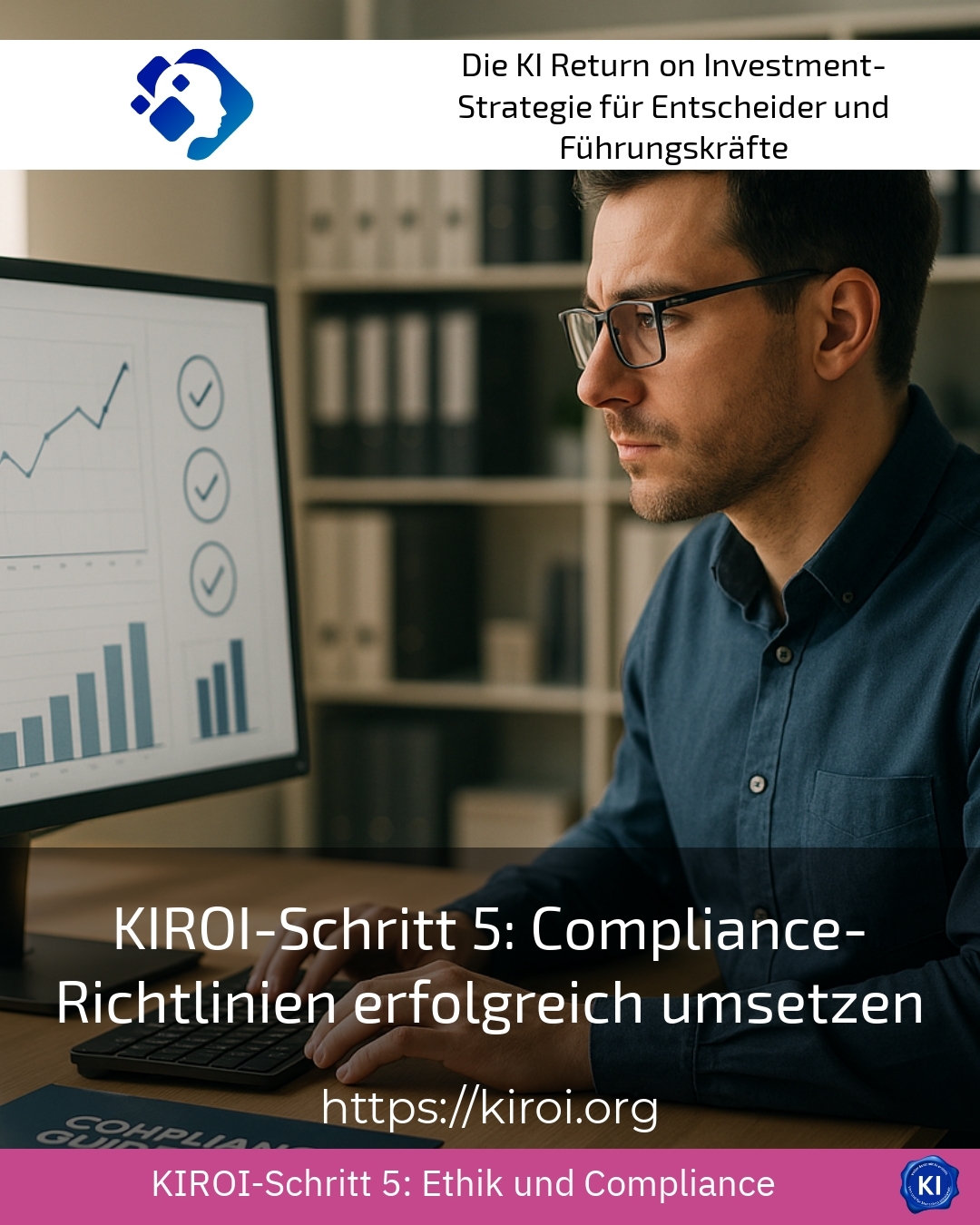Compliance guidelines are the backbone of a functioning company that wants to adhere to legal requirements and ethical standards in equal measure. Especially in a complex business world, their successful implementation is crucial in order to reduce risks and strengthen trust among customers and partners. The fifth step on the road to sustainable success begins right here - with the practical anchoring of compliance guidelines in the day-to-day running of the company.
Compliance guidelines: The first step towards sustainable implementation
The first principle for the successful implementation of compliance guidelines is binding integration at all levels of the organisation. Without broad acceptance and active participation, guidelines often remain paper products. Companies, for example in the financial sector, production or healthcare, know that the involvement of managers and employees is crucial. For example, a bank holds regular workshops to ensure that compliance violations are recognised and addressed at an early stage.
In the automotive industry, many companies report positive experiences when they integrate compliance as an integral part of their day-to-day work. This not only reduces the risk of violating the law, but also promotes internal transparency. Companies in the medical technology sector are also increasingly focussing on clear responsibilities, as adherence to compliance guidelines has a direct impact on product safety.
BEST PRACTICE with one customer (name hidden due to NDA contract)
A medium-sized financial services company used the expertise of transruptions coaching to effectively embed compliance guidelines into its management structure. Through individual coaching sessions, managers were empowered to promote a culture of openness and at the same time ensure compliance with the guidelines. The supported approach helped the company to minimise risks and strengthen employee loyalty in the long term.
Communication and training as the key to implementing compliance guidelines
The way to implement compliance guidelines is through clear and comprehensible communication. In the IT industry, for example, regular training courses in the form of e-learning or face-to-face events can help to make complex legal requirements transparent and clarify questions quickly. The automotive industry also uses interactive workshops to communicate compliance topics in a practical way.
Training is particularly important in the healthcare sector, where employees often handle sensitive patient data. One pharmaceutical company has strengthened and continuously monitored compliance with legal requirements by introducing a certification system. In this way, compliance is not perceived as an annoying fulfilment of duties, but rather as a stimulus for safe and professional handling.
BEST PRACTICE with one customer (name hidden due to NDA contract)
An IT service provider used a modular compliance training programme that was specially tailored to the various specialist areas. This enabled employees to better understand technological and legal requirements and implement them directly in their area of responsibility. This led to higher participation rates and a noticeably stronger compliance culture within the company.
Continuous monitoring and adjustment of compliance guidelines
Compliance guidelines are not static. In the food industry, for example, companies must regularly comply with new legal requirements and adapt their internal processes. Systematic monitoring, for example through internal audits or regular reporting, helps to recognise risks at an early stage and initiate countermeasures.
The energy sector has also shown that transparent documentation of all measures ensures traceability and thus creates trust with supervisory authorities. Changes in regulatory requirements are systematically integrated into existing processes, as shown by the exemplary use of compliance management systems in a large utility company.
This increases the company's agility and supports a sustainable compliance strategy in the long term.
BEST PRACTICE with one customer (name hidden due to NDA contract)
An energy supplier implemented a digital platform that enables compliance-related documents and evidence to be stored centrally and updated regularly. This enabled the company to react quickly to new legal requirements and ensure that its compliance guidelines are adhered to in the long term. This digital support helped to make internal processes more efficient and significantly reduce the risk of violations.
Reporting and accountability as the final pillar of compliance guidelines
Transparent reporting is necessary so that companies can document and take responsibility for adherence to compliance guidelines. In the property sector, regular reporting to the management helps to review the status quo and strategically adapt compliance measures.
In addition, clear accountability structures promote a culture of responsibility within the organisation. For example, a chemical company reports periodically to a compliance supervisory committee, which analyses violations and weaknesses and makes recommendations. Similar procedures are also being established in the aviation industry in order to effectively implement national and international requirements.
My analysis
The successful implementation of compliance guidelines requires a holistic approach that combines communication, training, monitoring and accountability. Practical examples from various industries show that accompanying support through coaching and digital tools facilitates the process and creates trust. Companies that see compliance not just as an obligation, but as an opportunity, benefit in the long term from increased security, better cooperation and a sustainable corporate image.
Further links from the text above:
[1] Compliance policy development - Governance Risk and Compliance
[3] Effective implementation of compliance guidelines - DataGuard
[5] Guidelines for compliance policies - Comenius Academy
[11] Compliance in the company - basics and strategies - AcadiAS
[15] Explanation of compliance guidelines - Navan
For more information and if you have any questions, please contact Contact us or read more blog posts on the topic Artificial intelligence here.















